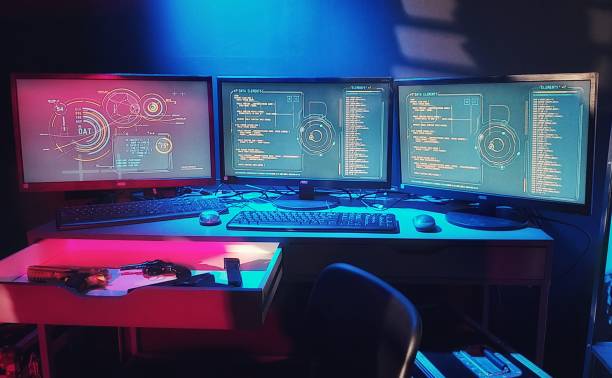Modern Learning Organization: 5 Differences Between it and a Traditional Learning Organization

What you do not know about your corporation can someday cost you thousands in fines. For many companies, that might be the end of their business. However, for some organizations, it could lead to a lot of negative publicity and even a fine from the government.
The good news is there are ways to avoid or mitigate the consequences of having your business fined. Read on to find out how and when to build a modern learning organization. Right from the beginning, digitalization has been viewed as a threat by many parents and educators alike.
As digital products have grown more commonplace, so have concerns about privacy, accessibility, and trust. But what if you can avoid the consequences of being sued or penalized? What if you can use technology seamlessly to drive innovation while maintaining control over what information is available?
Read on as we explain the ins and outs of developing a digital learning organization and best practices to help you get started.
Read also: 10 Different Types of E-Learning Platforms
What is a Modern Learning Organization?
You’re probably wondering how you can build a modern learning organization. One of the most effective ways to do so is to recognize the importance of digital literacy and the need for digital transformation. Then, you need to decide what your core values are and how you want to apply them within your organization.
Next, you need to identify the key stakeholders who will be impacted by changes and who you can find comfortable speaking up for the organization’s digital literacy efforts.
Finally, you need to decide how you are going to make this transformation a reality and how you are going to make sure that your stakeholders are on board with the process.
What Makes a Good Digital Modern Learning Organization?
A digital learning organization has a core value that unites all its stakeholders. One of the most important things you can do to create a great digital learning organization is to find values that your stakeholders seemingly share. These could be common sense, common cultural, or professional values.
Ask your peers what values they think are important and what values they would want to see carried over into the organization. You can also use surveys to find common values that your peers also have. Ask them what values they find most important and what values they would like to see brought back into the organization.
Start with your foundational skills and observe how others in your industry or department respond You’re going to need to start with your foundational skills before trying to build a diverse digital learning organization. The best way to get there is to observe how others in your industry or department respond.
Ask colleagues at different levels within your organization what value they typically take for granted. What values might not be typical to those in your industry or department? Then, ask peers in other roles within your organization what values they might consider most important. Once you’ve gathered these data points, you can begin to form your values.
What’s the Difference Between a Digital Learning Organization and a Traditional School?
Numerous different technologies are categorized under the umbrella word “digital.” An e-book, for instance, is a digital rendition of a printed textbook. The material found in an e-book is identical to that found in its printed equivalent and may be accessed in a variety of ways, including through the use of a computer or tablet.
This makes it similar to any other book you could discover in your neighborhood library or bookstore, right? The sole distinction is that e-books are stored electronically and accessible digitally via their file names and metadata rather than being bound together using pages and glue (or whatever else).
- E-books frequently cost less than printed books because they don’t need to be printed or shipped; instead, when you pay for them with your credit card, encoded data is transported from one source to another! This implies that costly printing presses are not necessary, right? perhaps possibly a real person involved in their creation! The only individuals who profit from the sale of e-textbooks are those who originally authored them (think professors).
- With digital education, you can have access to the most recent knowledge on everything from the most recent scientific discoveries to sports statistics, but traditional classroom curriculum is stagnant. In contrast to students who have access to interactive flat panel displays, who can link to and discuss the most recent news or information quickly, students in traditional classes are restricted to the resources their teacher provides them.
- The only materials available to pupils in a traditional classroom are those that the teachers themselves supply. On the other hand, digital education involves utilizing both online and conventional resources.
- In contrast to students who have access to interactive flat panel displays, who can link to and discuss the most recent news or information quickly, students in traditional classes are restricted to the resources their teacher provides them. They can access from any location, including a house, a workplace, or a computer lab at school. You can share knowledge via social media platforms like Facebook and Twitter with friends all around the world.
- In a typical classroom, teachers deliver lectures from behind desks, whereas in a digital classroom, teachers serve more as guides than as experts. Teachers frequently deliver lectures in the traditional classroom while seated at a desk. However, in a virtual classroom, the teacher serves more as a guide than an authority.
In a digital classroom, the instructor’s job is not to train pupils on how to think or how to solve issues. Instead, it is their responsibility to impart knowledge and concepts to pupils so that they can study independently and come to their own conclusions.
Why Build a Digital Learning Organization
The first reason digital learning organizations are different from traditional schools is their mission. A digital learning organization is about more than just creating digital content. It’s also about retaining and enhancing the existing cultural and physical assets of the school.
In other words, it’s about creating a new, more immersive and engaging learning environment. Second, digital learning organizations are focused on the long term. Traditional schools are still important in many ways, but they’re also important in managing the long term. Digital learning organizations aim to be more than just a learning center. They’re also a source of inspiration, business opportunities, and new business.
The Benefits of Virtual Technology
Digital learning organizations are using digital technologies to enhance the quality of instruction and the application of existing technologies. For example, smart devices, such as wearable computers and smart Gloves, can also be used to connect students with other students in the same class.
This means more than just information flow can occur digitally. For example, a digital video platform can provide a way for a group of students to create and share the digital video. This allows each student to share their ideas, feedback, and knowledge with other students in the same class.
The ability to create and share digital videos with other students is just one example of how virtual technologies are being used in educational settings. For example, students can use digital platforms to create virtual learning lessons. These lessons can be shared with other students in the same class to increase the overall impact of the lesson.
Digital platforms are the future
The adoption of digital platforms is set to skyrocket in the coming years. This is largely thanks to the rise of the internet. The popularity of smartphones and other handheld devices has led to an increase in the number of people using digital platforms. This has led to an increase in demand for digital platforms. With this increase in demand, there is also a corresponding increase in interest in digital learning organizations.
More and more people are looking for ways to create digital experiences that are more engaging, meaningful, and valuable. One of the most popular ways to do this is by creating digital experiences with smart devices, what is known as digital apps. Apps are software applications that are created and consumed apps. They can range from basic things like weather apps to more advanced experiences, such as navigation and calendar apps.
Summing up
Digital transformation is a necessary evil in the business world. It’s a necessary evil because companies need to modernize their processes and their internal digital literacy and they need to do it quickly.
However, the vendors you’ll choose for your digital transformation efforts also need to be in tune with the latest technologies. Only then will you be able to effectively integrate and use these technologies within your business. From there, you’ll be able to build a digital learning organization that is both mobile-first and digital-first.






